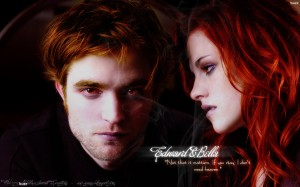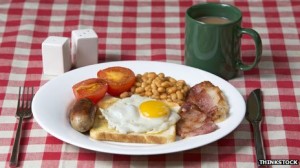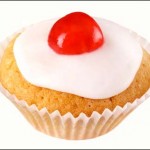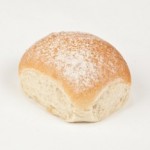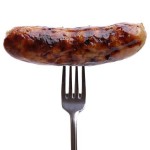As Frank Sinatra sang, “They’ve got an awful lot of coffee in Brazil”. Well, we’ve got an awful lot of coffee brews in the world — hot and cold, black and brown, frothy and smooth, strong and weak, bitter and sweet — and they are named variously and sometimes exotically: after the ingredients they contain, the countries they originate in, the way they’re made, or simply the way they look.
Here, courtesy of Wikipedia (with some Glossophilia edits), is a fairly comprehensive dictionary of coffees; please add any more in the comments section below.
Affogato
An affogato (Italian for “drowned”) is a coffee-based beverage or dessert. “Affogato style”, which refers to the act of topping a drink or dessert with espresso, may also incorporate caramel sauce or chocolate sauce.
Antoccino
An Antoccino is a single shot of espresso with steamed milk in a 1:1 ratio, served in an espresso cup.
Black Eye
A Black Eye is dripped coffee with a double shot of espresso. It has a strong taste.
Breve
Beverage made with steamed half-and-half cream.
Caffè Americano
Caffè Americano or simply Americano (the name is also spelled with varying capitalization and use of diacritics: e.g. Café Americano, Cafe Americano, etc.) is a style of coffee prepared by adding hot water to espresso, giving a similar strength to but different flavor from regular drip coffee. The drink consists of a single or double-shot of espresso combined with between 1 and 16 fluid ounces (30 – 470ml) of hot water. The strength of an Americano varies with the number of shots of espresso added. In the United States, “Americano” is used broadly to mean combining hot water and espresso in either order, but in a narrower definition it refers to adding water to espresso (espresso on the bottom), while adding espresso to water (espresso on the top) is instead referred to as a “long black”.
Variations include: long black, lungo, red eye, and Tors Hammer (from Norway)
Café au lait
A café au lait is traditionally the French way of preparing ‘coffee with milk’ both at home and in cafés in Europe. “Café au lait” stems from the same continental tradition as “caffè latte” in Italy, “café con leche” in Spain, “kawa biała” (“white coffee”) in Poland, “Milchkaffee” in Germany, “Mèlange” in Austria, “koffie verkeerd” in Netherlands, and “café com leite” in Portugal, meaning simply “coffee with milk”.
In northern Europe, café au lait is the name most often used in coffee shops for what other places call a ‘caffè latte’.
The term ‘café au lait’ has been used for espresso + milk since the 1950s in (among other places) the UK, the Netherlands, Belgium, Germany, Denmark, Norway and Sweden.
In the U.S., ‘café au lait’ is defined as a coffee beverage consisting of strong or bold coffee (sometimes espresso) mixed with scalded milk in approximately a 1:1 ratio.
Café Bombón
Cafe Bombon was made popular in Valencia, Spain, and spread gradually to the rest of the country. It might have been re-created and modified to suit European tastebuds as in many parts of Asia such as Malaysia, Thailand and Singapore the same recipe for coffee which is called “Kopi Susu Panas” (Malaysia) or “Gafeh Rorn” [lit: hot coffee] (Thailand) has already been around for decades and is very popular in “mamak” stalls and “kopitiams” in Malaysia. A café bombón, however uses espresso served with sweetened condensed milk in a 1:1 ratio whereas the Asian version uses ground coffee and sweetened condensed milk at the same ratio. For café bombón, the condensed milk is added to the espresso. For visual effect, a glass is used, and the condensed milk is added slowly to sink underneath the coffee and create two separate bands of contrasting colour – though these layers are customarily stirred together before consumption. Some establishments merely serve an espresso with a sachet of condensed milk for patrons to make themselves.
Café Cubano
Café Cubano (Cuban coffee, Cuban espresso, cafecito, Cuban pull, Cuban shot) is a type of espresso that originated in Cuba after espresso machines were first imported there from Italy. Specifically, it refers to an espresso shot which is sweetened with demerara sugar as it is being brewed, but the name covers other drinks that use Cuban espresso as their base. Drinking café cubano remains a prominent social and cultural activity within Cuba, Miami, West Palm Beach, Tampa and the Keys, as well as the Cuban exile community. Café Cubano is available in almost all coffee shops in Miami, making it a staple of local cuisine and tradition.
Caffè crema
Caffè crema (Italian: cream coffee) refers to two different coffee drinks: 1) An old name for espresso (1940s and 50s), and 2) a long espresso drink primarily served in Switzerland and Austria and northern Italy (1980s onwards), along the Italian/ Swiss and Italian/ Austrian border.
As a colorful term it generally means “espresso”, while in technical discussions, referring to the long drink, it may more narrowly be referred to as Swiss caffè crema.
Variant terms include “crema caffè” and the hyperforeignism “café crema” – “café” is French, while “caffè” and “crema” are Italian, thus “café crema” mixes French and Italian.
Café de olla
Café de olla or pot coffee is a traditional coffee-based drink prepared using earthen clay pots or jars in Mexico and other Latin American countries. It is flavored with cinammon and piloncillo. Consumed primarily in colder weathers, usually with the merienda meal, and accompanied with pan dulce pastries.
Caffè latte
Similar to the Portuguese Galão, a latte is a portion of espresso and steamed milk, generally in a 1:3 to 1:5 ratio of espresso to milk, with a little foam on top.
Caffè Marocchino
The Marocchino is made from espresso, steamed milk, and a dusting of cocoa powder, similar to the espressino.
Caffè Medici
A Caffè Medici is a doppio poured over chocolate syrup and orange peel, usually topped with whipped cream. The drink originated at Seattle’s historic Last Exit on Brooklyn coffeehouse.
Café miel
A café miel has a shot of espresso, steamed milk, cinnamon, and honey. The name comes from the French word for honey, miel.
Cafe mocha
A café mocha is a variant of a caffè latte. Like a latte, it is typically one third espresso and two thirds steamed milk, but a portion of chocolate is added, typically in the form of a chocolate syrup, although other vending systems use instant chocolate powder. Mochas can contain dark or milk chocolate.
The term moccaccino is used in some regions of Europe and the Middle East to describe caffè latte with cocoa or chocolate. In the U.S. it usually refers to a cappuccino made with chocolate.
A “cafe borgia” is a mocha with orange rind and sometimes orange flavoring added. Often served with whipped cream and topped with cinnamon.
Caffè Tobio
Caffè Tobio is an espresso drink with an equal amount of regular coffee. This combination simultaneously helps the flavor of weak coffee and hides the bitter flavor of espresso. Useful in chain coffee bars.
Café Touba
Café Touba is the spiritual beverage of Senegal, named for the holy city of Touba. During the roasting process, the coffee beans are mixed with grains of selim, and sometimes other spices, and ground into powder after roasting. The drink is prepared using a filter, similar to plain coffee. Sugar is often added before drinking.
Cafe Zorro
A Cafe Zorro is a double espresso, or doppio, added to hot water with a 1:1 ratio.
Ca phe sua da
Cà phê sữa đá, also known as, cafe sua da (Vietnamese: Cà phê sữa đá) or “V-caf”, is a unique Vietnamese coffee recipe. Literally, ca phe sua da means “iced milk coffee”. Ca phe sua da can be made simply by mixing black coffee with about a quarter to a half as much sweetened condensed milk and then pouring it over ice. A substitute made by many Vietnamese immigrants in the Southern U.S., particularly in Louisiana is a dark French roast, often with chicory; otherwise an imported Vietnamese-grown and roasted coffee is used when it is available. The coffee is traditionally brewed with a small metal Vietnamese drip filter into a cup containing the condensed milk. The condensed milk and coffee are stirred together and then poured over the ice. Ca phe sua nong (Vietnamese: ‘cà phê sữa nóng’) — literally, “hot milk coffee” — is made by excluding the ice.
In Spain, there is a similar beverage called Café del Tiempo ([Summer] Weather Coffee) or Café con Hielo (Coffee with Ice). Similarly, Café Bombón can be served with ice. The coffee is served in a small cup and an empty small glass with ices cubes. Sugar or condensed milk is added in the small cup while the coffee is still hot, and then the coffee is poured in the small glass with ices. When the coffee is cooled, the remaining ice is removed with the help of a spoon.
Cappuccino
Cappuccino is a coffee-based drink prepared with espresso, hot milk, and steamed milk foam. A cappuccino differs from a caffè latte in that it is prepared with much less steamed or textured milk than the caffè latte with the total of espresso and milk/foam making up between approximately 150 and 180 millilitres (5 and 6 US fluid ounces). A cappuccino usually exceeds the height of the cup, making the foam visible above the side of the cup. A cappuccino is traditionally served in a porcelain cup, which has far better heat retention characteristics than glass or paper. The foam on top of the cappuccino acts as an insulator and helps retain the heat of the liquid, allowing it to stay hotter longer.
Chai Latte
Numerous houses use the term chai latte to indicate that the steamed milk of a normal cafè latte is being flavoured with a spiced tea concentrate instead of with espresso. Add espresso shots for a “Dirty Chai Latte”.
Chocolate Dalmation
A Chocolate Dalmatian is a white chocolate mocha topped with java chip and chocolate chip.
Coffee milk
A coffee milk is a drink similar to chocolate milk; however, instead of chocolate syrup, coffee syrup is used. It is the official state drink of Rhode Island in the United States.
Cortado
A cortado is an espresso (also known as “Pingo” or “Garoto”) “cut” (from the Spanish and Portuguese cortar) with a small amount of warm milk to reduce the acidity. The ratio of milk to coffee is between 1:1 – 1:2, and the milk is added after the espresso. The steamed milk hasn’t much foam, but many baristas make some micro foam to make latte art. It is popular in Spain and Portugal, in Norway as well as throughout Latin America, where it is drunk in the afternoon. In Cuba, it is known as a cortadito. It’s usually served in a special glass, often with a metal ring base and a metal wire handle. There are several variations, including cortado condensada (espresso with condensed milk) and leche y leche (with condensed milk and cream on top). In the United States it is sometimes known as a “Gibraltar”. Differs from Cappuccino with little or no milk foam, and from Flat White in that the Flat White is always prepared with a double espresso and no foam.
Decaf
A coffee beverage made with decaffeinated beans.
Dirty Chai
Chai tea with a single shot of espresso. In addition, 1-2 tablespoons of instant Espresso may be brewed while simultaneously steeping Chai in the same container; a small amount of a dairy or non-dairy beverage of choice is usually added to complete the drink.
Doppio
Doppio in espresso is a double shot, extracted using a double filter basket in the portafilter.
Eiskaffee
Eiskaffee, literally “ice cream coffee”, is a popular German drink consisting of chilled coffee, milk, sweetener, vanilla ice cream, and sometimes whipped cream.
Espressino
An espressino is made from espresso, steamed milk, and cocoa powder, similar to the Marocchino
Espresso
Espresso is a concentrated beverage brewed by forcing a small amount of nearly boiling water — about 86 to 95 °C (187 to 203 °F) — under pressure through finely ground coffee beans. Espresso often has a thicker consistency than coffee brewed by other methods, a higher concentration of suspended and dissolved solids, and crema (meaning cream, but being a reference to the foam with a creamy texture that forms as a result of the pressure). As a result of the pressurized brewing process the flavours and chemicals in a typical cup of coffee are very concentrated. Espresso is the base for other drinks, such as a latte, cappuccino, macchiato, mocha, or americano. Espresso has more caffeine per unit volume than most beverages, but the usual serving size is smaller—a typical 60 mL (2 US fluid ounce) of espresso has 80 to 150 mg of caffeine, little less than the 95 to 200 mg of a standard 240 mL (8 US fluid ounces) cup of drip-brewed coffee.
Espresso Romano
An Espresso Romano is a shot of espresso with a small rind of lemon and sugar added to it.
Flat white
A flat white is an espresso coffee with a similar proportion of coffee to milk as a caffè latte and a cappuccino, the main difference being the texture of the milk and (in some regions) the number of espresso shots.
The drink originated in Australia and New Zealand in the late 1970s as alternative to the frothier cappuccino. It has since spread to the UK, where it first began to be served by independent cafes in London like Department of Coffee and Social affairs and Speak Easy, Where Owners and staff are from New Zealand bring the style of coffee into the UK before being adopted by chains Costa and Starbucks. It is rarely found in continental Europe or the United States.
In New Zealand it is traditionally made with two shots of espresso topped with stretched and texturised milk. The milk is prepared by steaming air into the milk and folding the top layer into the lower layers. To achieve the “flat”, non-frothy texture the steamed milk is poured from the bottom of the jug, holding back the lighter froth on the top in order to access milk with smaller bubbles, making the drink smooth and velvety in texture. This leads to a white coffee with the crema on top still intact. The drink was traditionally served in a ceramic cup used for cappuccinos (approximately 220-260ml in capacity), though present-day speciality cafes are more likely to serve it in smaller (150-160ml) cups with two Ristretto shots used, resulting in a drink noticeably stronger and less milky than a caffè latte.
Outside New Zealand, the milk is prepared in a manner more similar to that of a caffè latte; the milk is stretched and texturised but is poured freely rather than the froth being held back with a spoon or knife. This results in a thicker density of milk with more froth.
In Australia the drink more closely resembles a caffè latte as it tends to be served with a single shot of coffee, resulting in a weaker and milkier drink.
In the United Kingdom the drink has a similar strength to the New Zealand version. It is made in a small cup (150-160ml), contains two espresso (often ristretto) shots, and is often finished with latte art. The skill needed in preparing ristretto shots and latte art means that it is viewed as something of a speciality product in the UK.
Galão
Galão is a hot drink from Portugal made of espresso and foamed milk. In all similar to caffè latte or café au lait, it comes in a tall glass with about one quarter coffee, 3 quarters foamed milk. When the proportion is 1:1 it is called “meia de leite” (Chinesa in Madeira) and it comes in a coffee cup.
Guillermo
Originally, one or two shots of hot espresso, poured over slices of lime it can also be served on ice, sometimes with a touch of milk.
Greek frappé coffee
Greek frappé (Café frappé) (Greek: φραπές) is a foam-covered iced coffee drink made from spray-dried instant coffee. It is very popular in Greece especially during summer, but has now spread on to other countries. In French, when describing a drink, the word frappé means shaken and/or chilled; however, in popular Greek culture, the word frappé is predominantly taken to refer to the shaking associated with the preparation of a café frappé.
Green Eye
A Green Eye (also known as “Triple Death”) is dripped coffee with a triple shot of espresso.
Half-caf
Beverage made with half and half parts caffeinated beans and decaffeinated beans.
Iced coffee
Iced coffee is a cold variant of the normally hot beverage coffee.
Indian filter coffee
South Indian Coffee, also known as Madras Filter Coffee or Kaapi (Tamil phonetic rendering of “coffee’) is a sweet milky coffee made from dark roasted coffee beans (70%–80%) and chicory (20%–30%), especially popular in the southern states of Andhra Pradesh, Karnataka, Kerala and Tamil Nadu. The most commonly used coffee beans are Peaberry (preferred), Arabica, Malabar and Robusta grown in the hills of Kerala (Malabar region), Karnataka (Kodagu, Chikkamagaluru) and Tamil Nadu (Nilgiris District,Yercaud and Kodaikanal).
Instant coffee
Instant coffee is a beverage derived from brewed coffee beans. Through various manufacturing processes the coffee is dehydrated into the form of powder or granules. These can be rehydrated with hot water to provide a drink similar (though not identical) to conventional coffee. At least one brand of instant coffee is also available in concentrated liquid form.
Irish Coffee
Irish coffee is coffee combined with whiskey and cream, often further sweetened with sugar. Also available as a flavor of ice cream.
Kopi susu
Kopi susu is found in (at least) Malaysia, Borneo and Indonesia and very similar to the preceding entry for Ca phe sua nong. Literally, kopi susu means “milk coffee”. Served in a glass, kopi susu can be made simply by mixing black coffee (arabica) with about a quarter to half a glass of sweetened condensed milk then let stand to cool and allow the grounds to sink to the bottom. You should not drink this to the end unless you want to “eat” the ground coffee. Kopi Turbruk is as above but uses sugar instead of sweetened condensed milk.
Latte macchiato
Latte macchiato literally means stained milk. This refers to the method of preparation, wherein the milk gets “stained” by the addition of espresso. It differs significantly from caffè latte firstly in that espresso is added to milk (rather than milk to espresso), secondly that it features more foam, rather than simply hot milk, thirdly in that often only ½ (or less) of an espresso shot is used, and fourthly in that it is often a “layered” drink, rather than being mixed as in a caffè latte. Simply, in a caffè latte, the emphasis is on the coffee, while in a latte macchiato, the emphasis is on the milk.
Macchiato
Caffè macchiato – Macchiato, meaning ‘stained’, is an Espresso with a dash of foamed milk. At first sight it resembles a small Cappuccino but even if the ingredients are the same as those used for Cappuccino a Macchiato has a much stronger and aromatic taste.The milk is foamed directly into the espresso cup, which is then put under the coffee outlet. The espresso is then drawn into the cup. Cocoa is then sprinkled over the drink (optional). Often the process is reversed and milk foam is floated on top of extracted coffee. A long Macchiato will have two shots of espresso and a small amount of hot water (as per long black). A short Macchiato will usually have one shot of coffee and less water (as per short black).
Mélange
Mélange is popular in Austria, Switzerland and the Netherlands, and is traditionally similar to caffè latte and cappuccino (and more a mix of the two), a large cup with (today) espresso and steamed milk with some milk foam. Mélange and its ‘cousin’ cappuccino both have variations with whipped cream atop the blend of milk and coffee. Outside Vienna this is sometimes referred to as ‘Wienermelange’, although that name does not exist there. The origin of Mèlange goes back to the 1700s as a Café drink (you wouldn’t call it that at home) in Austria.
Mocha (see Cafe mocha above)
Mazagran
Mazagran (sometimes misspelled as Mazagrin) is a long cold coffee beverage usual in Portugal and served in a tall glass. It is made with at least strong coffee – usually espresso – lemon and ice, though sometimes sugar, rum or water is added. Sometimes a fast version is achieved by pouring a previously sweetened espresso in a cup with ice cubes and a slice of lemon.
Palazzo
A Palazzo is an iced coffee variant, popular in Southern California. It is two shots of espresso, chilled immediately after brewing and mixed with sweetened cream. A Palazzo is typically made using a moka pot.
Pharisäer
A Pharisäer, meaning a Pharisee, is an alcoholic coffee beverage that is popular in the Nordfriesland district of Germany. It consists of a mug of black coffee, a double shot of rum, and a topping of whipped cream. In 1981, a court in Flensburg ruled that 2 centilitres (0.70 imp fl oz; 0.68 US fl oz) of rum were not sufficient for preparing a genuine Pharisäer.
Pocillo
A shot or small portion of unsweetened coffee, now usually made either using an espresso machine or a moka pot, but traditionally made using a cloth drip, usually served in cups made for the purpose (called “tazitas de pocillo“). It is widely-drunk in Latin America, usually as an afternoon or after-dinner coffee. The defining feature is the size, usually half size to a quarter size of the usual ~8 US fluid ounces (240 ml) coffee cups. There are a number of small-sized drinks that use tazitas de pocillo, including sweetened (such as café cubano and café cortado), but these are usually not called a pocillo; rather, the Spanish diminutive suffix “-ito” is usually added to the name of the drink wanted in a pocillo size cup. For example, a pocillo-sized cortado is usually called a cortadito.
Red Eye
A Red Eye is dripped coffee with a single shot of espresso. This drink is also known as a Shot in the Dark.
Red Tie
A traditional Thai Iced Tea, which is a spicy and sweet mixture of chilled black tea, orange blossom water, star anise, crushed tamarind, sugar and condensed milk or cream, with a single shot of espresso.
Red Tux
A Zebra Mocha combined with raspberry flavoring.
Regular coffee
In New York City, Boston, and Philadelphia, a regular coffee is one with milk (or cream) and sugar. A variant phrasing is coffee regular.
Ristretto
Ristretto is a very “short” shot of espresso coffee. Originally this meant pulling a hand press faster than usual using the same amount of water as a regular shot of espresso. Since the water came in contact with the grinds for a much shorter time the caffeine is extracted in reduced ratio to the flavorful coffee oils. The resultant shot could be described as bolder, fuller, with more body and less bitterness. All of these flavors are usually attributed to espresso in general, but are more pronounced in ristretto. Today, with the hand press out of favor and modern automated machines generally less controllable, ristretto usually just means less water; a double espresso shot is typically around 60 ml (2 fl oz), while a double ristretto is typically 45 ml (1–1.5 fl oz).
Rüdesheimer kaffee
Rüdesheimer kaffee is an alcoholic coffee drink from Rüdesheim in Germany invented in 1957 by Hans Karl Adam. It is made with Asbach Uralt brandy with coffee and sugar, and is topped with whipped cream.
Skinny Latte
A reduced calorie latte made with steamed non-fat milk.
Turkish coffee
Beans for Turkish coffee are ground or pounded to the finest possible powder, finer than for any other way of preparation. Preparation of Turkish coffee consists of immersing the coffee grounds in water which is most of the time hot but not boiling for long enough to dissolve the flavoursome compounds. While prolonged boiling of coffee gives it an unpleasant “cooked” or “burnt” taste, very brief boiling does not, and bringing it to the boil shows without guesswork that it has reached the appropriate temperature.
In Turkey, four degrees of sweetness are used. The Turkish terms and approximate amounts are as follows: sade (plain; no sugar), az şekerli (little sugar; half a level teaspoon of sugar), orta şekerli (medium sugar; one level teaspoon), and çok şekerli (a lot of sugar; one and a half or two level teaspoons). The coffee and the desired amount of sugar are stirred until all coffee sinks and the sugar is dissolved. Following this, the spoon is removed and the pot is put on moderate heat; if too high, the coffee comes to the boil too quickly, without time to extract the flavour. No stirring is done beyond this point, as it would dissolve the foam. Just as the coffee comes to the boil the pot is removed from the heat. It is usually kept off the heat for a short time, then brought to the boil a second and a third time, then the coffee is poured into the cups. Getting the thickest possible layer of foam is considered the peak of the coffee maker’s art. One way to maximise this is to pour slowly and try to lift the pot higher and higher as the pouring continues. Regardless of these techniques, getting the same amount of foam into all cups is hard to achieve, and the cup with the most foam is considered the best of the lot.
Vienna coffee
A “Vienna coffee” is the name of a popular traditional cream based coffee beverage. It is made by preparing two shots of espresso in a standard sized coffee cup and infusing the coffee with whipped cream (as a replacement for milk and sugar) until the cup is full. Then the cream is twirled and optionally topped off with chocolate sprinklings. The coffee is drunk through the cream top.
White Coffee
Ipoh “White” Coffee is a popular coffee drink which originated in Ipoh, Perak, Malaysia. The coffee beans are roasted with palm-oil margarine, and the resulting coffee is served with condensed milk. The taste is smooth and sweet, and is often served iced.
“White coffee” is also a common nickname in the UK for coffee with milk.
Wiener Melange
A Wiener Melange is a specialty coffee drink similar to a cappuccino. The difference is sometimes assumed to be that the Melange is made with milder coffee but the Viennese coffee company Julius Meinl describes a Wiener Melange as “one small espresso served in a large cup of coffee. Steam milk and add milk foam to coffee (=small milk coffee)”. Cafe Sabarsky in Manhattan concurs. At Cafe Sperl in Vienna, the Melange is 1/2 cup “black coffee” and 1/2 cup creamy milk, completed by milk foam.
Yuanyang
Yuanyang, sometimes also called Ying Yong, is a popular beverage in Hong Kong, made of a mixture of coffee and Hong Kong-style milk tea. It was originally served at dai pai dangs (open space food vendors) and cha chaan tengs (cafe), but is now available in various types of restaurants. It can be served hot or cold. The name yuanyang, which refers to mandarin ducks, is a symbol of conjugal love in Chinese culture, as the birds usually appear in pairs and the male and female look very different. This same connotation of “pair” of two unlike items is used to name this drink.
Zebra Mocha
A Zebra Mocha, sometimes known as a “Black Tux” or a “Black and White”, is a mixture of regular mocha with a white chocolate mocha
* Liqueur coffee, as its name suggests, is a coffee brew with a 25 ml shot of liqueur. This brew is usually served in a clear, clean, pre-heated, liqueur coffee glass with the coffee and cream separated for good visual and taste effect. The liqueur of choice is added first with a teaspoon of raw cane sugar mixed in. The glass is then filled to within an inch of the top with good, strong, fresh filter coffee. Fresh, chilled, additive free, slightly whipped cream is then poured carefully over the back of a cold teaspoon, so that it floats on top of the coffee and liqueur mixture. The sugar is required in the coffee mixture to help the cream float.
Names of specific liqueur coffees:
- Gaelic coffee (Drambuie or Glayva)
- Irish Coffee (Whiskey)
- Brandy Coffee (Brandy)
- Keoke Coffee (Brandy and Kahlúa)
- English Coffee (Gin)
- Calypso Coffee (Tia Maria or Kahlúa and Rum)
- Jamaican Coffee (Tia Maria & Rum)
- Shin Shin Coffee (Rum)
- Baileys Irish Cream Coffee
- Monk’s Coffee (Bénédictine)
- Seville Coffee (Cointreau)
- Witch’s Coffee (Strega)
- Russian Coffee (Vodka)
- Priest Coffee (Brennivín)
- Corfu Coffee (Koum Quat liquor)
- Kaffee Fertig (coffee with Swiss prune schnapps)
- Caffè corretto (that is an Italian beverage, consists of a shot of espresso “corrected” with a shot of liquor, usually grappa, brandy or sambuca.)
- Coffee liqueurs (ex. Kahlúa, Kamora)

















